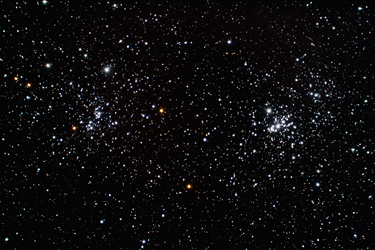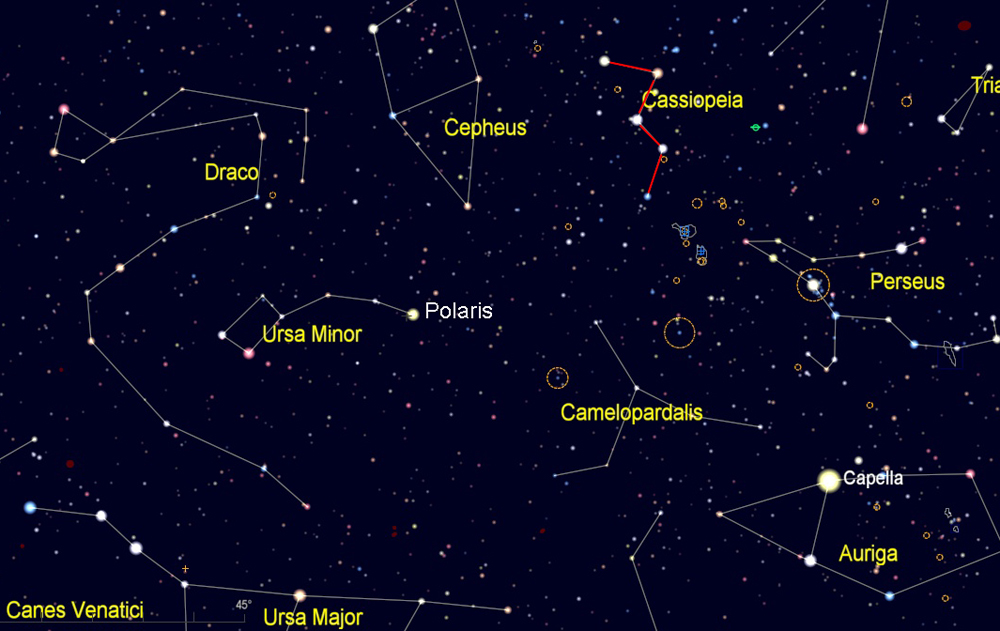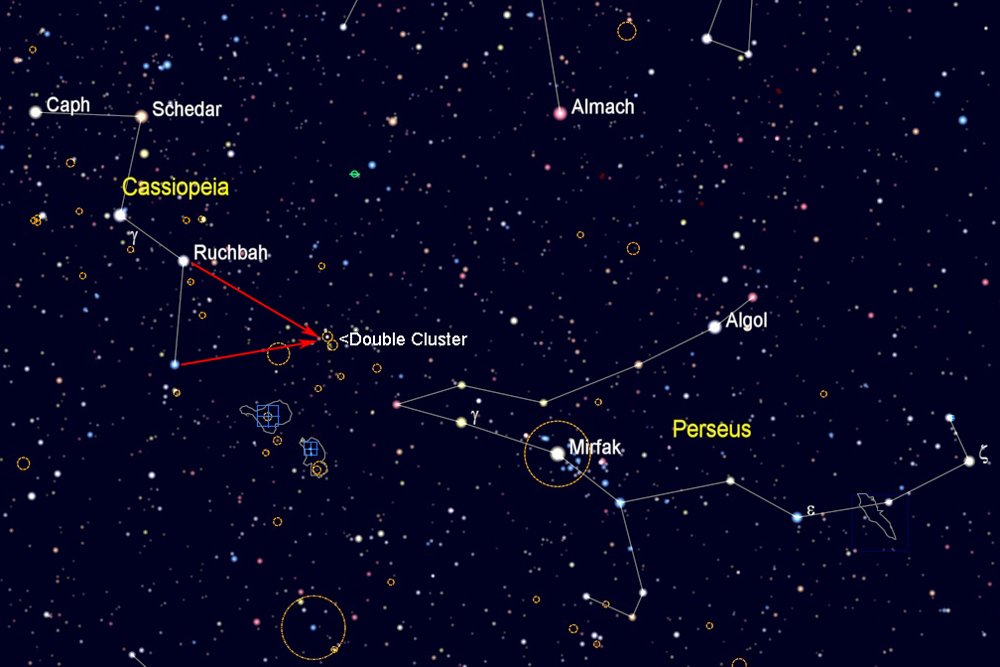
Find the constellation Cassiopeia, which has a distinctive "W" shape (although its orientation changes at different times of year as it circles the north celestial pole). On fall evenings, look for Cassiopeia in the northeast, where its tilt makes it look like a "3", and in the winter look high in the north above Polaris, where it is oriented like an "M".

Once you have located Cassiopeia, use the first two stars of the W shape to make a slightly elongated triangle pointing in the direction of Perseus, as shown in the chart below. With the naked eye, you might see a hazy spot there, which is the Double Cluster. If not, the clusters will be readily visible in binoculars or a finderscope. With a telescope, use a low-power eyepiece to appreciate the full extent of this beautiful star field.
